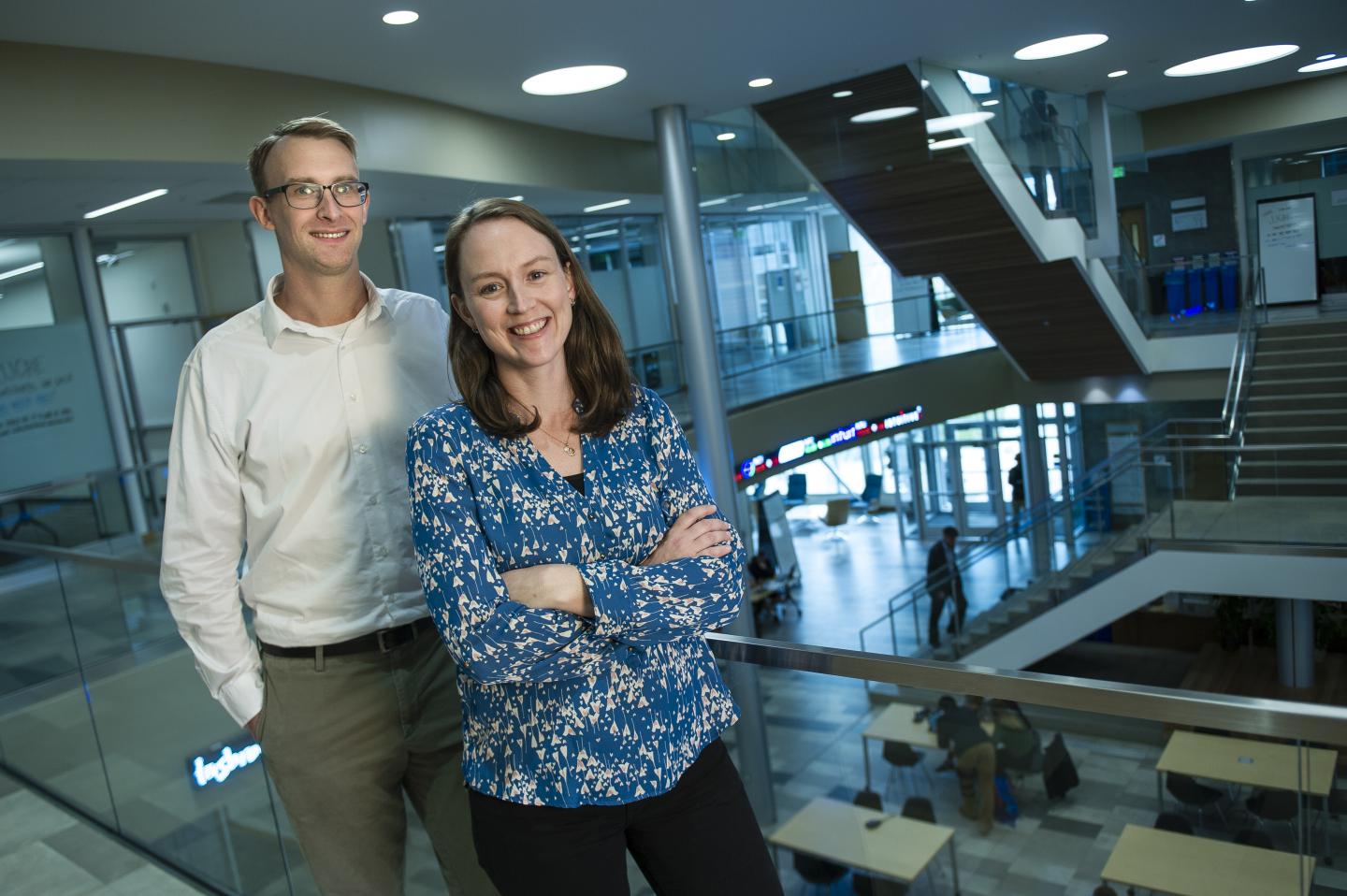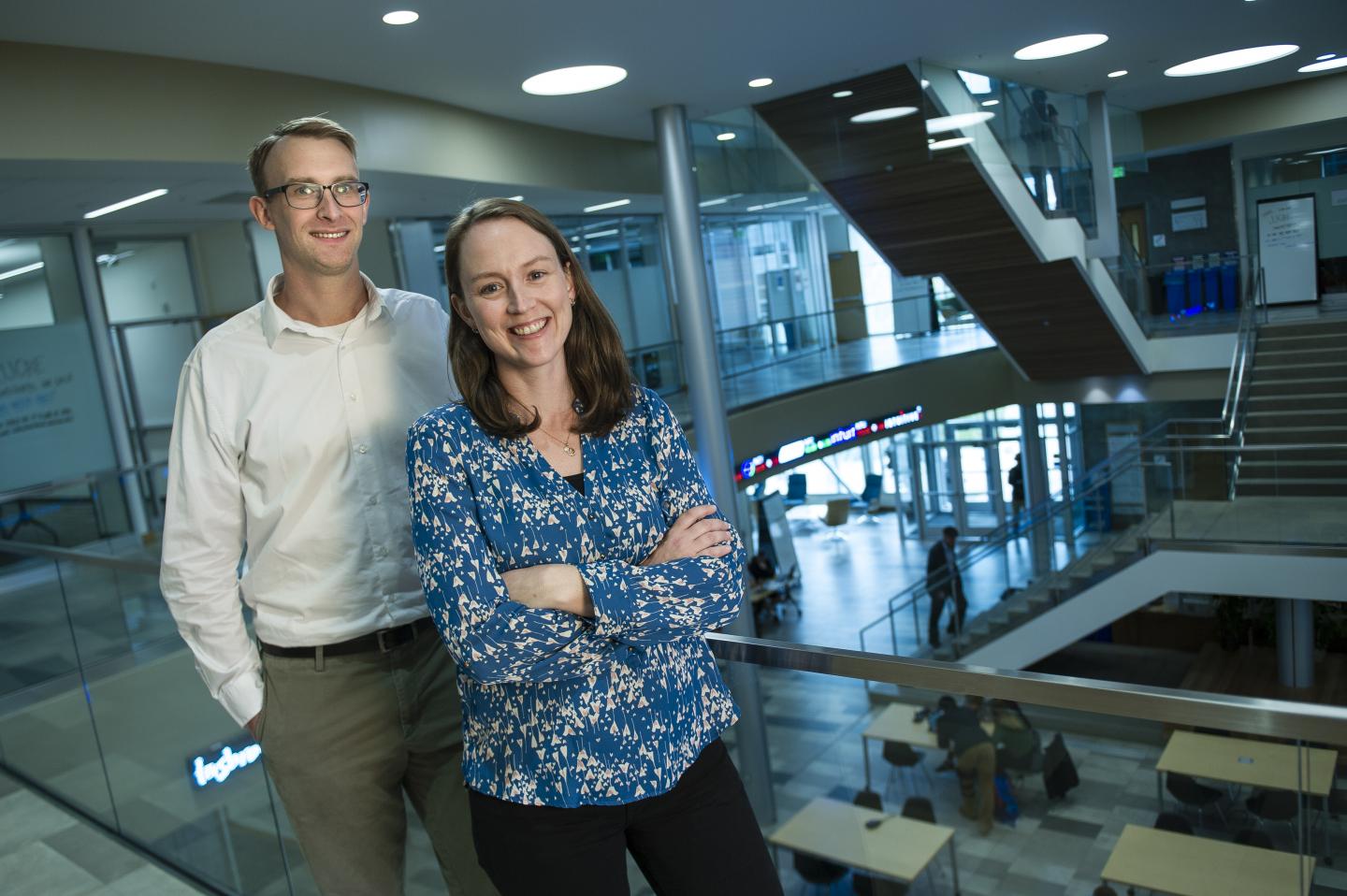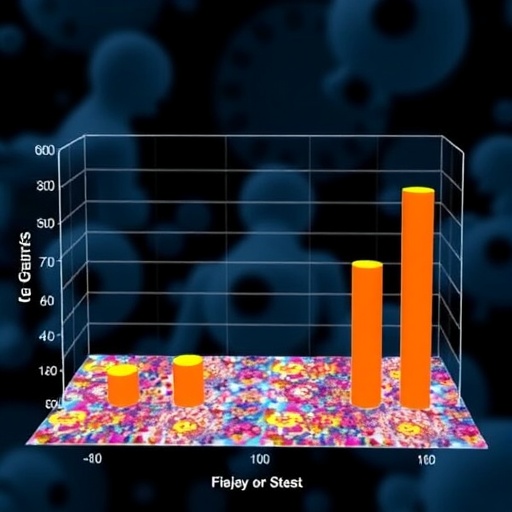
Credit: Montana State University photo by Kelly Gorham
BOZEMAN — A pair of Montana State University researchers who examine how variations across federally qualified health centers impact efficiency and patient health outcomes – and who are simultaneously working to develop models to better understand the strengths and challenges facing Montana's health care system – have received more than $120,000 to continue their work.
The funding, from the National Institutes of Health, will enable Maggie Thorsen, assistant professor in the Department of Sociology and Anthropology in the College of Letters and Science, and Andreas Thorsen, assistant professor of management in the Jake Jabs College of Business and Entrepreneurship, to continue the second year of a pilot project funded by the Center for American Indian and Rural Health Equity, also known as CAIRHE, at MSU. Their research focuses particularly on pregnancy-related health outcomes and disparities, such as prenatal health and birth outcomes.
"We very much appreciate all of the support we've received," said Maggie Thorsen. "We're hopeful that our work trying to understand how to improve the system in Montana could improve the health of women and infants in Montana and ultimately their health later in life."
A paper focusing on part of the Thorsens' research, "Measuring efficiency of community health centers: a multi-model approach considering quality of care and heterogeneous operating environments," was published recently in Health Care Management Science. Other co-authors on the paper were Ronald G. McGarvey and Rohith Madhi Reddy, both from the University of Missouri.
Across the U.S., more than 1,300 federally qualified health centers – or FQHCs – deliver comprehensive health services to approximately 24 million Americans, mostly individuals who are medically underserved and uninsured. The centers – which receive funds from the U.S. Health Resources and Services Administration's Health Center Program to provide primary care services in underserved areas – aim to address widespread health disparities in rural and urban areas. And, they have displayed some successes in terms of improved patient health outcomes, according to Maggie Thorsen. For example, they have been shown to improve pregnancy-related health outcomes, such as a lower infant mortality rate and a lower percentage of babies born at low birth weight, she said. They also are linked with greater access to prenatal care in the first trimester compared to communities not served by these centers.
Evidence of growing health inequalities in the United States underscores the critical importance of federally qualified health centers for improving health outcomes and equity, Maggie Thorsen noted. However, while the health centers generally target disadvantaged and underserved populations who are at a higher risk for poor health, there is considerable variation across these centers in terms of the populations they serve and the environments in which they are located. For example, a federally qualified health center serving low-income patients in rural Montana may face different challenges than a federally qualified health center in New York City.
Variations in the health centers may lead to variations in patient outcomes, as well, according to Andreas Thorsen. That's why one of the goals of the Thorsens' pilot project is to understand differences among the centers in terms of efficiency, quality of care and pregnancy-related health outcomes and disparities.
A second goal of the project is to conduct an analysis of pregnancy-related health care facilities located in Montana.
"Access to obstetric services in rural areas in Montana and across the nation is diminishing," Andreas Thorsen said. "This is a big issue, particularly in Montana."
He explained that their team is using methods from the field of operations research and a method called facility location modeling to understand more precisely what the system looks like now. Then, they will use mathematical models to help inform resource allocation decisions that can improve the system and increase access. The researchers use data from a number of sources, including data from the U.S. Health Resources and Services Administration and the U.S. Census Bureau.
"We're looking at how we could reduce driving times for certain populations, for example," Andreas Thorsen said. "If we see an area of the state that's high-risk, we might consider expanding or adding facilities. Could we identify optimal places for those facilities?"
"CAIRHE is excited to support the Thorsens' important research," said Alexandra Adams, director and principal investigator for CAIRHE. "I believe their work will make a significant contribution toward improving health equity for rural mothers and their infants."
Maggie Thorsen said the project benefits from an innovative interdisciplinary approach.
"Problems are best addressed by thinking about multiple perspectives," she said. "Drawing on methods from different disciplinary perspectives is a real strength of this approach," she said. "The questions (researchers from different disciplines) ask and the things (those researchers) try to include in the models are going to be different. We each have our ideas we bring to the table to help us in developing these questions…. Together we've been able to come up with richer kinds of questions."
By improving understanding of how variation across federally qualified health centers impacts efficiency and patient health outcomes, as well as by developing models to better understand the strengths and challenges facing Montana's integrated health care system, the researchers hope to provide policy recommendations for improving health and reducing disparities in Montana, Andreas Thorsen said.
"Eventually, our aim is to develop an interactive mapping application so we could take results of our analyses and have a user-driven system where stakeholders could look at this, understand what's happening in their communities and how solutions could impact them," he said. "They could understand how to better increase access and increase health outcomes."
The hope is that a better understanding of the centers' unique challenges, as well as their outcomes, will ultimately help experts to devise a system that improves patient outcomes, Maggie Thorsen said.
"If we can better understand factors that impact the health of our youngest members of society, then this has implications for their health across their life course as well as their outcomes in other domains," she said.
###
Media Contact
Maggie Thorsen
[email protected]
@montanastate?lang=en
http://www.montana.edu
Original Source
http://www.montana.edu/news/18139/msu-researchers-studying-federally-qualified-health-centers-receive-120-000-grant





